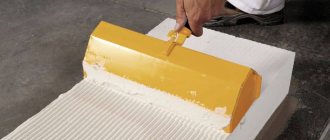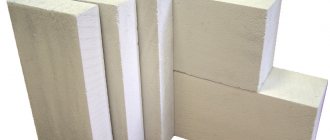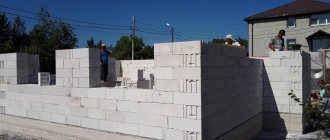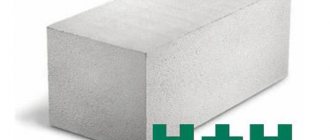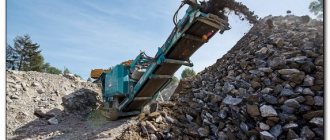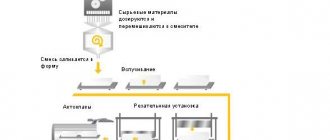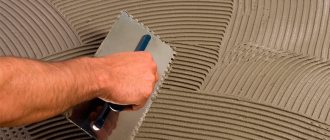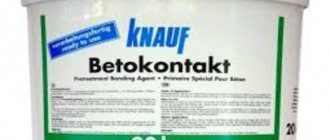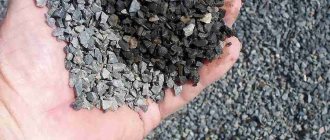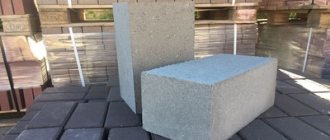This is a building material for constructing walls. You can read how to use it correctly in the article about laying blocks with glue. The basis for the production of gas silicate blocks is aerated concrete.
Aerated concrete is an artificial stone with gas bubbles (pores) evenly distributed throughout the volume. Its main components are cement, quartz sand and gas-forming agents, however, some manufacturers of gas silicate blocks can add lime, gypsum and even production waste (ash, slag). Various aluminum powders and pastes act as gas generators. In a simplified version, the production process proceeds as follows: all components are mixed, water is added, and the finished mixture is poured into a mold. Further, during the reaction of the blowing agent with water, gas is released and the mixture foams and rises. After initial hardening, aerated concrete is cut into products of the required shape. They are then treated with steam in an autoclave or dried by electric heating. Depending on this, they are autoclaved and non-autoclaved. Aerated concrete is one of the varieties of cellular concrete; their names are presented in the table for your reference.
Comparative table of characteristics of materials for house construction
Indicators
| Unit change | Construction brick | Building blocks | Foam concrete | |||
| clay | silicate | expanded clay concrete | aerated concrete | |||
| Density | kg/m3 | 1550-1700 | 1700-1950 | 900-1200 | 350-700 | 400-1200 |
| Weight of 1m2 wall | kg | 1200-1800 | 1450-2000 | 500-900 | 200-300 | 200-900 |
| Thermal conductivity | W/m2 | 0,6-0,95 | 0,85-1,15 | 0,5-0,7 | 0,10-0,28 | 0,12-0,38 |
| Frost resistance | cycle | 25 | 25 | 25 | 15-35 | 15-65 |
| Water absorption | % by mass | 12 | 16 | 18 | 20 | 12 |
| Compressive strength | MPa | 2,5-25 | 5-30 | 3,5-7,5 | 1,5-10 | 1,5-17 |
Types of porous compositions
There are 2 types of porous concrete:
- Aerated concrete obtained by mixing a cement solution with aluminum powder. When mixed, the interaction results in the formation of cavities that increase the volume of the array fivefold. Aerated concrete acquires a spongy structure. When the composition is placed in an autoclave, the mixture hardens and the products acquire an industrial appearance. The process is possible industrially and requires special equipment.
- Foam concrete produced by adding foamed reagents to the cement composition, forming air bubbles. The composition acquires porosity when thoroughly mixed, hardens and turns into foam concrete. The specifics of the technology include the production of material on a construction site and in a handicraft manner.
Table of properties and characteristics of foam concrete and aerated concrete
Place different types of products nearby. There are visual differences. Aerated concrete products have a clear geometry, are light, and sink. Foam concrete is similar in appearance to cement and floats on the surface.
Characteristics of foam concrete blocks
| Concrete grade based on average dry density | D400 | D500 | D600 | D700 | D800 | D900 |
| Limits of deviations of the average density of concrete in a dry state, kg/m3 | 351-450 | 451-550 | 551-650 | 651-750 | 751-850 | 851-950 |
| Thermal conductivity coefficient of concrete in a dry state is not more than, W/(m*K) | 0,10 | 0,12 | 0,14 | 0,18 | 0,21 | 0,24 |
| Concrete class by compressive strength | M0.5 M0.75 | B0.75 B1.5 | B1 B1.5 B2 | B1.5 B2 B2.5 | B2 B2.5 B3.5 B5 | В2.5 В3.6 В5 В7.5 |
| Average compressive strength (with coefficient of variation Vn=17%) not less than, MPa | 0,7; 1,1 | 1,1; 1,4; 2,2 | 1,4; 2,2; 2,9 | 2,2; 2,9; 3,6 | 2,9; 3,6; 5,0; 7,2 | 3,6; 5,0; 7,2; 10,7 |
Key features of aerated concrete
Manufacturers are constantly offering new solutions, trying to reduce the cost of building materials and simplify the construction work themselves as much as possible. And cellular concrete is one of such solutions. So, aerated blocks are a variation of porous concrete, which is, in principle, an artificial stone containing spherical cells .
Aerated concrete
Cellular concrete - terminology features
To make the material, quartz sand, cement and special gas-forming agents (suspensions or aluminum-based pastes) are used. lime, ash or gypsum are additionally used . The resulting mass is subjected to prolonged temperature exposure under high pressure conditions. The solution foams due to a chemical reaction, and hardens with pores already formed.
When building a house, pay attention to the different sizes of gas blocks
When choosing gas blocks, which this article is devoted to, you need to pay attention to the following characteristics:
- expected load on the walls;
- dimensions of the blocks themselves;
- thermal performance indicators;
- methods to simplify the construction process;
- proportionality of masonry;
- price.
Dowels for aerated concrete
Characteristics of cellular concrete
| Index | Cellular concrete, non-autoclaved, thermal insulating | Non-autoclaved structural cellular concrete |
| Volumetric mass in dry state, kg/m3 | 400-600 | 600-1600 |
| Compressive strength at 28 days, kg/cm2 | 10-30 | 30-60 |
| Thermal conductivity, Kcal/m.h.g. | 0,1-0,17 | 0,17-0,33 |
| Heat transfer resistance through the wall is 200 mm. 300 mm, Kcal/kn.m.h.g. | 0,71-0,95 0,43-0,58 | |
| Acoustic characteristics for a 200 mm wall. 300 mm., dB | 43-45 35-37 | 40-42 47-49 |
| Vapor permeability, mg/m.h.p. | 0,17-0,23 | |
| Shrinkage after 90 days, % | 0,033 | |
| Fire resistance, min | 120 | 120 |
| Water absorption,% | 8,5 |
Advantages of a porous composite
Blocks made of cellular concrete have many positive properties. Main advantages:
- Ability to conduct heat. In terms of thermal conductivity, the material is close to wood, but there is no restriction on the width of the walls being built. When the thickness of walls built from composites corresponds to the dimensions of the brickwork, a favorable thermal regime of the room is ensured. The integrity and uniformity of the building structure is due to the absence of the need for special insulation materials. This is relevant for the construction of private facilities, where the developer is interested in saving heat and, naturally, material resources.
- Economical. The insignificant weight of the porous product, which is lighter than brick, allows minimizing the costs of construction and installation activities and arrangement of the foundation. The composite does not require additional insulation, and the use of special adhesives allows for savings in masonry.
Advantages of cellular concrete
- The ability to pass steam-saturated moist air. With an increase in the coefficient of vapor permeability, the microclimate improves. A room made of porous concrete provides comfort in winter and coolness in summer. Ventilation of the building reduces the likelihood of mold and mildew formation.
- Flame resistant. Cellular blocks have high fire resistance, which makes them different from wood. There is no need for additional fire protection. The material is used as a refractory.
- Increased dimensional accuracy. The tolerances are ± 2 millimeters, which allows for a minimum thickness of the masonry joint, reducing the consumption of the adhesive mixture, and increasing the thermal insulation of the walls.
Main characteristics of thickened 2-hollow sand-lime brick
| Index | Indicator value |
| Strength grade | 125, 150, 200, 250 |
| Compressive strength, MPa, not less | 12,5; 15,0; 20,0; 25,0 |
| Bending strength, MPa, not less | 1,5; 1,8; 2,0 |
| Frost resistance grade | F35, F50 |
| Water absorption,%, not less | 6 |
| Weight (dry), kg. no more | 4,3 |
| Humidity,% | 3-5 |
| Emptiness,% | 16 |
| Thermal conductivity coefficient, W/(m*C) (seamless masonry fragment) | 0,856 |
| Specific activity of natural radionuclides, Bq/kg, no more | 370 |
| Average density, kg/m3 | 1630 |
About the advantages and disadvantages of gas blocks
Let's figure out why aerated concrete blocks are so popular and why certain doubts may arise when purchasing. So, the advantages of the material include:
- ease of processing (blocks are easy to cut, drill, plan);
- frost resistance (the specific value depends on the technical characteristics of the individual material);
- large dimensions with low weight (labor costs during construction are reduced, while the speed of work, on the contrary, increases);
Scheme of insulation and cladding of aerated concrete walls
- fire resistance (the material does not burn at all due to its mineral composition);
- environmental safety (natural components are used in the production process);
Level laying of autoclaved concrete blocks is carried out using a building level
- excellent sound insulation characteristics (especially in relation to low-frequency noise) due to the presence of air cells;
- high heat saving (due to their porosity, the blocks almost do not conduct heat, which allows you to save on heating).
Working with gas blocks is easy and simple.
But there are also disadvantages that should also be remembered:
- the higher the density, the worse the thermal insulation characteristics of the material;
- the material absorbs moisture , and therefore the creation of a vapor barrier is necessary. To do this, use a deep penetration primer and plastering the walls;
Types of wall finishing made from aerated concrete blocks
- gas blocks are not elastic , and therefore if the foundation is deformed, cracks will appear on the walls. For this reason, it is better to give preference to a monolithic strip foundation, which increases the cost of work;
A crack in an aerated concrete wall is the result of non-compliance with construction technology
- special glue or cement-sand mortar is used for installation, and they increase heat loss by 10% and 25%, respectively . Armored belts and jumpers also reduce heat resistance.
The tongue-and-groove system performs the function of a “thermal lock” and allows you to avoid applying glue along a vertical seam
On a note! To ensure good thermal insulation and load-bearing capacity of the house, use gas blocks with a density of 500 kg/m³ . A solid base and a vapor barrier are also important. As for glue, it is better to use a special thin-layer version for installation.
Special glue for laying gas blocks
The adhesive mixture is distributed by a special carriage with a serrated edge
Main characteristics of thickened 11-core sand-lime brick
| Index | Indicator value |
| Strength grade | 125, 150, 200, 250 |
| Compressive strength, MPa, not less | 12,5; 15,0; 20,0; 25,0 |
| Bending strength, MPa, not less | 1,5; 1,8; 2,0 |
| Frost resistance grade | F35, F50 |
| Water absorption,%, not less | 6 |
| Weight (dry), kg. no more | 4,3 |
| Humidity,% | 3-5 |
| Emptiness,% | 14-16 |
| Thermal conductivity coefficient, W/(m*C) (seamless masonry fragment) | 0,698 |
| Specific activity of natural radionuclides, Bq/kg, no more | 370 |
| Average density, kg/m3 | 1630 |
Comparison of foam blocks and gas blocks. Which option is better?
Let’s immediately make a reservation that the characteristics of both materials are identical, and the same GOST standards are used in their manufacture. Foam blocks are also porous, they are also made from a cement-sand mixture with various additives. But, unlike aerated concrete, which hardens during heat treatment, foam blocks harden naturally. Various foaming agents are also used for these building materials.
Knitting brick cladding and wall filler from blocks
When deciding which material is better, you need to take into account that foam concrete is made using extremely simple technology, which does not require factory conditions. Therefore, it can be produced directly on the construction site using portable equipment. But this advantage is not always to the benefit of buyers: the fact is that the production of foam concrete is often carried out by unscrupulous entrepreneurs, which affects the quality of the final product .
But aerated concrete is produced in large factories that adhere to the required standard indicators.
Note! When buying foam blocks from small manufacturers, always inquire about the availability of quality certificates and permits.
Good glue ensures strong adhesion of the blocks to each other.
Foam blocks can also be toxic, because, as noted above, they harden naturally, and therefore some chemical processes may not be completely completed. Aerated blocks are processed in autoclaves, so the resulting product is an environmentally friendly product.
The strength of these materials also varies, as does the production technology. Yes, their density is the same, but at the same time, gas blocks are noticeably stronger than foam blocks. The indicators of frost resistance and moisture absorption are also different. For example, aerated concrete absorbs more liquid, which affects frost resistance/heat transfer. But the plastering work mentioned earlier successfully solves this problem.
Autoclaved aerated concrete production technology
On a note! Foam blocks also do not always have standard dimensional characteristics. The material crumbles, and therefore is not as malleable in processing as aerated blocks.
On the other hand, a cubic meter of foam concrete costs approximately 500-800 rubles less than aerated concrete. It turns out that it is impossible to say unequivocally what is better - foam or aerated concrete. Therefore, when choosing this or that building material, focus on the purpose of its use, quality characteristics, and whether all technological processes were followed during production.
The reliability and durability of the structure being built depends on compliance with the technological process of laying aerated blocks.
Master class on laying aerated concrete walls
Let's take a step-by-step look at how to correctly lay gas blocks. But first, we note that laying should always start from the corners of the future building, and the highest corner should be the first (can be determined using a laser level). When laying rows, it is convenient to focus on the nylon cord, which is stretched between the corners. Subsequent rows also begin to be laid from the corners.
We build a house from aerated concrete
The first row sets the correct level for masonry
Table No2. Step-by-step instructions for laying gas blocks.
| Steps, photo | Description of actions |
| Step 1 | So, determine the highest angle and start laying from there. Lay the first row on top of the waterproofing layer, on concrete, the thickness of which is at least 20 cm. |
| Step 2 | Apply the glue in a layer of thickness within 1-3 mm, using a notched trowel (it must be selected in advance according to the thickness of the walls). Distribute the glue evenly over the surface of the gas blocks. |
| Step 3 | When laying the second row, make a dressing. Try to lay each block as accurately as possible, check the position using a building level. |
| Step 4 | During installation, focus on the construction cord. Adjust the position of the blocks using a rubber hammer. |
| Step 5 | Do dressing when laying load-bearing internal walls. As for the partitions, lay them end-to-end with the longitudinal walls (use anchors). |
| Step 6 | To remove uneven surfaces, use a sanding board and a plane. Remove any resulting dust with a brush. |
| Step 7 | Reinforce aerated concrete masonry with metal reinforcement. |
Jumpers in a house made of aerated concrete
House made of gas blocks
Calculator for the amount of concrete for pouring an armored belt
Go to calculations
Video - What mistakes to avoid when laying aerated blocks?
Cost of aerated blocks
As a result, we will find out what the average market cost of aerated concrete blocks is . Many companies are involved in their production, but the most popular domestic brands are the following:
- ECO;
- SilAbit;
- GRAS;
- LZID;
- BONOLIT;
- AeroStone;
- Thermocube;
- PORITEP;
- DRAUBER;
- El-BLOCK.
Aerated blocks are used in low-rise construction for external and internal load-bearing walls.
As for prices, they depend on the density, frost resistance and other characteristics of the material discussed above. Products from different Russian brands, having similar characteristics, will cost approximately the same. For example, a cubic meter of DRAUBER blocks will cost about 2,500 rubles, ECO - about 2,650 rubles, and SilAbit - 2,600 rubles. It turns out that one piece of aerated block with a density of 500 kg/m³ will cost an average of 92 rubles .
Note! When purchasing, be sure to inquire about the availability of quality certificates. Also inspect the blocks for external damage (the properties of the material during operation will depend on this). And our review of the sizes, manufacturers, characteristics and prices of aerated concrete will definitely help you make the right choice!
Video - Types and features of gas blocks
Calculation of the required number of gas blocks
To ensure that there is no excess material left after construction is completed, calculate in advance the approximate number of blocks that will be required for construction. You can use the formula below for this.
B x 1.05 x (L x N – Spr) = V , in which
- B is the thickness of the gas blocks in meters;
- 1.05 is an approximate material reserve factor (5%);
- L – indicator of the total length of the walls, also in meters;
- H is the height of the walls (in meters);
- Spr – area of openings (both door and window openings together) in square meters;
- and finally, V is the required number of blocks (in cubic meters).
Based on the formula, you can find out how many blocks there are in 1 cubic meter, depending on their dimensions. More details in the table below.
Based on the formula, you can create the following table for calculating the number of gas blocks in a cube
On a note! This is still an approximate calculation, and therefore it is more of a recommendation. It is better to use a special online calculator for this - this way you will more accurately calculate what and how much you will need to build a house.
Calculator for calculating the number of bricks or blocks for an interior partition
Go to calculations
